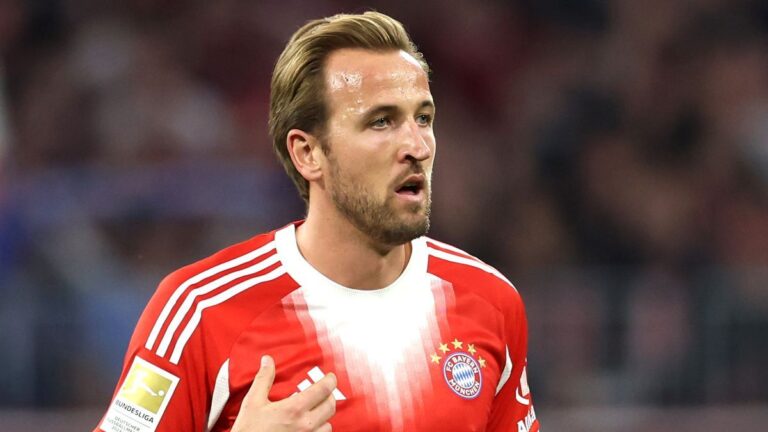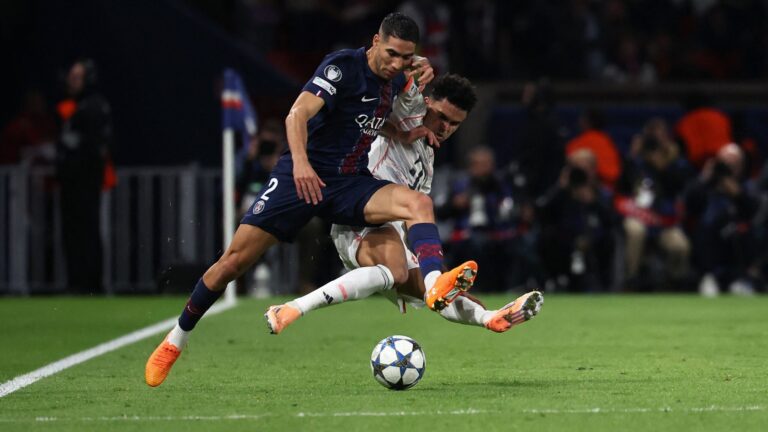Unintentional Doping Drama: How Alvarez’s Hair Loss Treatment Led to a UEFA Ban for Athletic Club
In a shocking turn of events in the football world, Athletic Club’s defender Alvarez is confronting a lengthy doping ban, revealing the stringent measures against prohibited substances in elite sports. This mishap, tied to an everyday remedy for hair loss, highlights the difficulties sports professionals encounter in staying compliant with anti-doping policies during their daily lives.
- Alvarez is sidelined until April 2026 after a positive doping check
- The identified substance is the banned diuretic Canrenone
- Alvarez may start rejoining practice sessions from February 2026



UEFA’s Handling of the Doping Issue with Alvarez and Its Effects on Athletic Club’s Performance
UEFA has enforced a ban on Alvarez lasting through April 2026 after finding a forbidden substance in standard testing. This decision followed his role in an intense Europa League semi-final against Manchester United on May 1, 2025, which ended in a 3-0 defeat for his side. Now 30, Alvarez’s unavailability could disrupt Athletic Club’s backline for a large part of the next season, forcing adjustments to their tactics in both local leagues and continental tournaments.
Analysis of the Banned Compound and Doping Procedures
Canrenone, the compound found in Alvarez’s sample, is listed by WADA as a diuretic and masking substance, making it off-limits at all times. The substance was detected right after the game, in keeping with WADA’s 2025 standards designed to uphold sports fairness by monitoring these types of drugs. According to recent WADA reports, there’s been a 15% uptick in diuretic-related violations in European soccer in the last year, stressing the importance of greater player education.
Sequence of Actions Resulting in the Ban
According to UEFA’s announcement, Alvarez was tested on May 1, 2025, immediately following the Europa League match. Analysis from an accredited WADA lab verified the presence of Canrenone, which is under S5 on the banned substances roster. Alvarez accepted a provisional ban on June 2, 2025, with official probes starting June 10, 2025. The UEFA ethics committee concluded on August 19, 2025, with a 10-month restriction starting from June 2, 2025, enabling Alvarez to ease back into team drills from February 2, 2026, as per UEFA’s latest rules for accidental infractions.
Alvarez’s Account and Strategies for Clearing His Name
Alvarez has shared his frustration, claiming the positive test resulted from unknowingly using a hair loss product with the prohibited element. He said, “We’ve traced the positive outcome to an everyday item I took without checking what was in it.” As the probe continues under confidentiality, Alvarez is working hand-in-hand with Athletic Club to strengthen his defense, aiming for a quick outcome that might bring him back to play.
Similarities with Other Recent Doping Controversies in Football
This scenario echoes past incidents, like that of a well-known forward suspended in 2024 for an accidental drug mix-up, leading to a six-month hiatus. Alvarez’s situation points to emerging patterns, as WADA data shows about 20% of 2025 doping cases involve medical treatments, urging players to scrutinize product details. Meanwhile, Athletic Club is scouting new defensive players, such as from their youth program, to sustain their on-field strength.
Long-Term Effects for Alvarez and Professional Football
Restricted from all football engagements until April 2026, Alvarez has the opportunity to re-enter team workouts in early February 2026, providing a ray of optimism for his return. This event not only jeopardizes his professional path but also acts as a warning for the entire sports sector, where enhanced screening methods and training initiatives are being rolled out to avoid these errors. Moving ahead, both Alvarez and his team are prioritizing adherence and recuperation, using insights from this incident to foster better safety in athletics.
Key Moments of the Doping Controversy
Few events in professional football spark as much interest as a positive doping result, particularly after a pivotal game like Athletic Club versus Manchester United. The athlete involved showed traces of a restricted substance post-match, triggering intense debate and examination. What’s especially compelling is the player’s assertion that the result came from a routine hair loss medication, not any deliberate performance boost.
Renowned for its heritage and focus on local players, Athletic Club hit the news when UEFA’s test uncovered finasteride, a common ingredient in hair loss solutions. This drug can appear on prohibited lists since it breaks down into elements similar to banned hormones. The clash with Manchester United proved exciting in the Europa League, with Alvarez excelling before dealing with the fallout weeks later. Terms such as “failed doping test” and “UEFA suspension” have become top search trends in sports media, underscoring the need for caution with daily remedies.
Connecting the Doping Violation to the Player’s Hair Loss Remedy
The player has openly linked his positive doping test to a doctor-recommended treatment for hair loss, a problem that’s surprisingly frequent among competitors. Remedies like those with finasteride or minoxidil are popular for issues related to stress or heredity, yet they can unintentionally cause failed tests if not reported correctly.
Here, the player mentioned using the treatment for several months under a physician’s guidance, but he didn’t grasp its potential to violate doping rules. Sports health professionals explain that compounds like finasteride are on WADA’s restricted list as they might hide other enhancers or alter hormones. This case stresses the necessity for open communication between athletes, their coaches, and anti-doping bodies about all drugs, even for personal health concerns like hair thinning.
In a broader view, athletes often deal with hair loss from the demands of their careers, treating it as a minor issue, but as seen in this Athletic Club example, simple medications can create major problems. The community, including fans and peers, has expressed support, acknowledging that doping can sometimes stem from innocent health choices rather than misconduct.
Outcomes of the UEFA Imposed Ban
UEFA acted quickly and firmly, issuing a prolonged suspension that may keep the player out for months, subject to any appeals. Penalties for doping typically span from four months to two years, and this one has already influenced the player’s future and Athletic Club’s roster. Outside of the ban itself, the label of a doping failure can harm endorsements, squad spirit, and potential moves.
For example, sitting out important games and practices could make it tough for the player to get back to peak condition, compounding the emotional and physical strain. In the larger scope of football, this UEFA ban reinforces the goal of fair competition through doping laws, though it can unfairly impact those without intent. Search queries for phrases like “Athletic Club player doping” and “hair loss treatment suspension” have surged, as audiences explore the practical consequences.
Exploring the Scope of Doping Regulations in Athletics
Doping extends beyond typical enhancers like steroids or blood modifiers; it includes various substances that might offer an edge or breach safety norms. For the Athletic Club player, the emphasis is on accidental doping via treatments for hair loss. WADA updates its forbidden list frequently, holding athletes accountable for awareness, though ambiguities arise with drugs that serve multiple purposes.
Entities such as UEFA partner with WADA to apply these regulations, performing surprise tests after events like the Manchester United fixture. This practice supports game honesty but also prompts discussions on better athlete education and assistance. For instance, numerous players lack full knowledge of how everyday medications interact with doping checks, resulting in situations like this.
Strategies to Help Athletes Dodge Doping Complications
For those in sports, this episode provides crucial advice on avoiding comparable problems. Start by consulting a sports health expert before trying any new drug, even for common issues like hair loss-they can guide you through WADA’s rules and propose safe options.
Consider these helpful strategies:
- Be transparent: Track all your prescriptions, supplements, and non-prescription items, and discuss them with your team’s health team.
- Build knowledge: Refer to sources like WADA’s site to verify if a substance is banned, with apps and resources for fast checks.
- Request exemptions: If a needed medication is restricted, submit for a therapeutic use exemption ahead of time via your sports authority.
- Track your wellbeing: Schedule regular medical reviews to spot potential risks early, particularly for ongoing conditions like hair loss.
- Keep current: Stay updated on changing doping policies from UEFA and similar groups to steer clear of unexpected issues.
Adopting these approaches safeguards your career and encourages a more balanced way to achieve in sports.
Lessons from Comparable Doping Scenarios
Reviewing other instances offers valuable perspectives on how these matters unfold. Take, for example, a 2018 professional runner who received a short ban for a substance in their allergy medicine, which was eventually ruled unintentional. In football, athletes from teams like AC Milan have encountered suspensions due to tainted products, showing that issues like hair loss treatment violations are not uncommon.
Additionally, a case with a La Liga player who blamed a failed test on a dietary supplement with minor amounts of a prohibited stimulant illustrates shared elements: external contamination, the value of openness, and appeal results. In Alvarez’s Athletic Club case, the review process might follow suit, possibly shortening the ban if innocence is proven.
Through these examples, it’s evident that UEFA bans, while severe, don’t always end careers, especially with supporting evidence. This developing story involving the Athletic Club player serves as an important lesson for everyone in sports.
The Incident Overview
In the world of professional football, the pressure to perform at the highest level can lead to unexpected challenges, including run-ins with anti-doping regulations. A notable case involved a footballer from Athletic Club, the storied La Liga team based in Bilbao, Spain. The player in question tested positive for a banned substance shortly after a high-stakes match against Manchester United in a UEFA competition. This doping controversy has sparked widespread discussion about the intersection of personal health needs and strict anti-doping rules in sports.
Details of the Failed Doping Test
When a footballer like this one undergoes routine anti-doping tests, it’s typically after major matches, such as the intense clash with Manchester United. In this instance, the test revealed traces of finasteride, a common ingredient in hair loss medications. Finasteride is often prescribed for conditions like male pattern baldness, but it’s listed as a prohibited substance by the World Anti-Doping Agency (WADA) due to its potential performance-enhancing effects, such as masking other banned substances.
The footballer, whose identity was kept somewhat private amid the investigation, claimed the positive result stemmed from a legitimate prescription for hair loss treatment. This type of scenario highlights how everyday medications can inadvertently lead to failed doping tests in football. Athletes must navigate WADA’s prohibited list carefully, which includes substances that could be flagged even if they’re used for non-performance reasons.
The Player’s Explanation and Its Impact
The player attributed the failed test directly to his hair loss medication, emphasizing that it was taken under medical supervision and not for any unfair advantage. This explanation is common in doping cases, where athletes argue for a therapeutic use exemption (TUE). A TUE allows competitors to use banned substances for legitimate medical purposes, but these requests must be approved in advance by governing bodies like UEFA.
In a conversational tone, let’s break this down: Imagine you’re an athlete dealing with hair loss-it’s a personal issue that shouldn’t affect your career, right? But in football, even something as routine as a prescription can turn into a nightmare. The player’s story has resonated with fans, drawing attention to the mental and physical toll of doping accusations.
- Key factors in the player’s defense:
- The medication was not intended to enhance performance.
- It was prescribed by a licensed doctor for a non-sport-related condition.
- Lack of prior notification to anti-doping authorities, which often complicates these cases.
This situation underscores the importance of transparency in football doping matters, as athletes are required to disclose all medications during testing protocols.
UEFA’s Response and Suspension
UEFA, the governing body for European football competitions, took swift action following the failed test. The initial suspension was extended after a review process, reflecting the organization’s zero-tolerance policy on doping violations. Extended suspensions like this one can last several months or more, depending on the substance and circumstances.
How Suspensions Work in UEFA Competitions
UEFA’s suspension process is structured to ensure fairness while protecting the integrity of the sport. Here’s a quick overview:
- Initial Provisional Suspension: Upon a positive test, the player is typically sidelined immediately, preventing participation in matches, training, or events.
- Appeal and Review Process: The athlete can appeal, providing evidence like medical records. In this case, the extension likely came from insufficient proof or failure to secure a TUE beforehand.
- Duration and Penalties: Suspensions for doping can range from a few months to years, with fines or bans from international play. For our Athletic Club player, the extended ban meant missing key fixtures, impacting both his career and the team’s performance.
This case serves as a reminder of how a single failed doping test can ripple through a football season, affecting team dynamics and fan sentiment.
The Role of Hair Loss Medication in Doping Cases
Hair loss medications, particularly those containing finasteride or similar compounds, have been at the center of several high-profile doping scandals in football and other sports. These drugs are prohibited because they can alter hormone levels, potentially providing an edge in athletic performance, though that’s not always the intent.
Common Medications and Prohibited Substances
Not all hair loss treatments are banned, but many fall under WADA’s categories for anabolic agents or hormone modulators. For instance:
- Finasteride: Used in products like Propecia, it’s a frequent culprit in failed tests due to its ability to inhibit testosterone conversion.
- Other Examples: Minoxidil might be safer, as it’s not typically prohibited, but athletes should always double-check.
To keep things engaging, think of it this way: If you’re an aspiring footballer, treating hair loss is like walking a tightrope-balancing health with the rules of the game. Athletes are advised to consult sports medicine experts before starting any new medication.
- Steps to Avoid Doping Issues:
- Research WADA’s prohibited list annually, as it updates regularly.
- Apply for a TUE if you have a valid medical need.
- Work with team doctors who understand both football demands and anti-doping regulations.
Implications for Athletes in Professional Football
This incident has broader implications for footballers worldwide, emphasizing the need for education on doping prevention. Many players face similar dilemmas, balancing personal health with the rigorous standards of UEFA and other bodies.
Advice on Medication Use for Athletes
If you’re in the football world or follow the sport closely, here’s some practical advice to stay informed:
- Always prioritize consulting with anti-doping certified professionals.
- Keep detailed records of all prescriptions to use as evidence if needed.
- Stay updated on how medications might interact with football’s anti-doping policies, which can evolve.
The Athletic Club case illustrates the human side of sports regulations, where a player’s quest for normalcy can clash with the pursuit of fair play. By understanding these nuances, athletes can better protect their careers and well-being.









